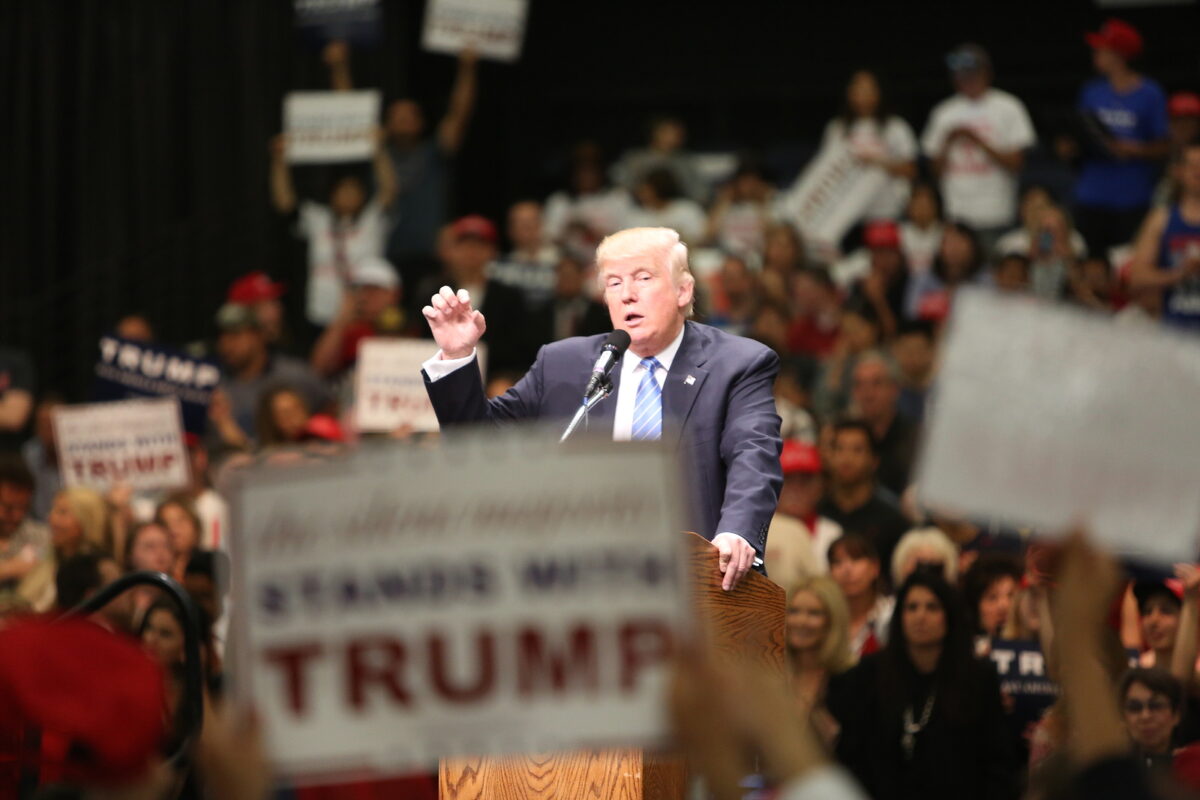It is presumptuous to state with absolute certainty what policy Donald Trump might pursue concerning the EU and the Balkan states, as he is known for his unpredictability and unconventional decision-making process.
Several things, however, can be stated with certainty. He will first weigh what he perceives to be the best interest of the United States, albeit this does not suggest that his final decision would necessarily serve America’s ultimate national interest.
His personal gratifications will also guide him, as he is naturally self-obsessed, a narcissist who believes that he is uniquely qualified to be the president of the United States and that only he can solve problems and conflicts that have eluded many of his predecessors.
As a real estate developer, Trump deals with political issues as if they were business transactions, guided by a zero-sum approach in which he must gain at the expense of his counterpart’s losses.
That said, he will still have to adhere to many norms and principles that have guided United States foreign policy. The United States Senate, where Republicans will be in control, will not necessarily follow all of his desired policy objectives, especially when deemed to be critical threats to the United States and its allies’ national security concerns and many international obligations.
The EU’s historical tendency to defer to United States policy in the region complicates this situation. Should Washington adopt a less interventionist approach, European leaders might be compelled to take a more proactive position in maintaining regional stability, which could translate into a more unified approach to the bloc’s security and economics.
The potential for intensified nationalism and economic instability due to protectionist policies and shifting dynamics would require European leaders to reassess their strategies. They must prepare for a changing geopolitical landscape that requires greater autonomy from the US and resilience in addressing the increasing internal movement to the right and external threats from Russia in particular.
Security
One of the foremost concerns is Trump’s unpredictable stance on NATO. During his previous term, Trump often mocked NATO allies for not meeting defence and spending commitments, which heightened concerns that he might withdraw US support from the alliance.
Such a move could encourage adversaries like Russia and destabilise some Eastern European countries, such as Poland, particularly in light of the ongoing war in Ukraine. Although Trump is unlikely to withdraw from the alliance, especially because Democrats and Republicans have passed legislation to prevent it and would oppose any underhanded attempts to do so, nevertheless NATO member states must not take that for granted.
In connection with the war in Ukraine, Trump is likely to shift policy by pushing for a negotiated settlement, which raises significant concerns about the implications for Ukraine’s sovereignty, security, and territorial integrity. Trump would likely pressure Ukraine to make some territorial concessions by substantially reducing US military support for Ukraine, which could set a troubling precedent or even precipitate future conflict.
These geopolitical conditions remain fluid as the incoming Trump administration and Ukraine prepare for potential changes in strategy and implementation leading up to Trump’s inauguration. In this context, the EU may be forced to reconsider its defense strategies, which would, to some extent, be independent from the United States.
Economic implications for the EU
Trump’s threat to impose tariffs on imports from China to the United States by 20 percent could instigate retaliatory measures and escalate into a trade war, especially with China, leading to economic instability.
Raising tariffs on imported goods from the EU by 10 percent will also seriously affect transatlantic economic relations and directly impact the European community, especially in the automotive and agricultural sectors.
In addition, Trump’s policy could also disrupt the EU’s dependence on Chinese components. If he insists on reducing EU imports from China, it could increase costs while reducing competitiveness and, at the same time, increase tension between the US and the EU.
Trump’s return to power would also evoke multi-layer challenges for both the United States and the Balkan states.
Economic Implications for the Balkans
The Balkans rely heavily on trade with the EU and the United States; thus, imposing any tariff will directly impact their economies.
Moreover, Trump’s deportation plans of undocumented immigrants, including many from the Balkan states, could result in a substantial reduction of money transfers earned by Balkan labourers in the US who would be forced to leave the country.
Nevertheless, given Trump’s emphasis on economic ties, there will also be a renewed focus on economic deals and partnerships rather than broader statements about democracy.
Nationalism and rational stability
It should be noted from the onset, however, that the fundamental US position regarding the Balkans will not change, regardless of who the president is.
Although Trump’s scepticism toward NATO could affect the US military presence in the Balkan states, there will be no dramatic withdrawals, even if he desires it, due to congressional opposition.
This has been consistent across Republican and Democratic administrations because maintaining stability in the Balkans remains a fundamental US strategic interest that transcends administrations. Trump, in particular, does not want a new conflagration to fall on his lap.
His return, however, could potentially nod to nationalist leaders within the Balkans, such as Serbia’s President Aleksandar Vučić, to take a harder stand against Kosovo. It should be noted though, that Trump is transactional and will push for a quid pro quo.
He may exert more pressure on Kosovo to agree, for example, to act on the Association of Serb Municipalities in return for Serbia stopping its campaign to persuade countries to withdraw their recognition of Kosovo and blocking Kosovo from joining international organisations.
Kosovo faces a heightened risk from Russia’s influence once Trump returns to power. Trump will likely take a tougher position on Kosovo’s Prime Minister Albin Kurti. The potential change could revive contentious discussions around a land swap between Serbia and Kosovo, which the latter refuses even to contemplate.
For this reason, it is critical for Kosovo to remain vigilant, work closely with the EU, and be prepared for any shift in US foreign policy.
And given Trump’s tendency to admire strong men, it would not be surprising if he sought closer alignment with Hungarian Prime Minister Viktor Orbán on regional issues. Additionally, Trump could potentially roll back sanctions on actors like Milorad Dodik in Bosnia’s Republika Srpska, which could potentially destabilize the region.
Finally, the combination of Serbian nationalism and Russian opportunism could rattle stability in the region. Trump’s warm relations with Putin might still promote Serbian interests to please Putin, which could undermine stability in Bosnia and Herzegovina.
Leaders such as Dodik have already expressed that a Trump presidency will facilitate their secessionist ambition, particularly regarding Republika Srpska’s independence from Bosnia. If given a position in the administration, Richard Grenell might play a significant role in shaping Balkan policy.
It should be emphasised that these potential policy changes are speculative and based on Trump’s policy toward the Balkan states during his first term and the statements made by his new foreign policy advisors. Trump’s actual policy could differ depending on various factors and regional developments.
Moreover, known for his desire to achieve quick results, Trump may disengage from the region if he does not consider it a strategic priority, and potentially, he would leave it to the EU. But given his mantra of America first, he should know that maintaining the US’ global leadership where it can exert considerable influence best serves America’s interest.
Bracing for impact
The EU has been preparing for a potential Trump return to power, and the Balkan states have also been doing the same. They are bracing for a potentially tumultuous period. The EU is focusing on economic resilience that would include retaliatory measures and strengthening trade agreements with other nations.
On the security side, they have decided to increase defence spending and assume a greater role in helping Ukraine to defend itself. The Balkans are also looking to foster greater unity within the European community by taking steps to enhance their integration with the EU and develop strong ties with its institutions.
The EU’s new strategy addresses many contingencies that may arise to ensure that even the slightest US disengagement will not render the European community vulnerable. Noting all the speculations about what Trump will or won’t do, no doomsday will dawn on the European Community under his watch, as greater self-reliance will help the EU to emerge even stronger and firmly united.







